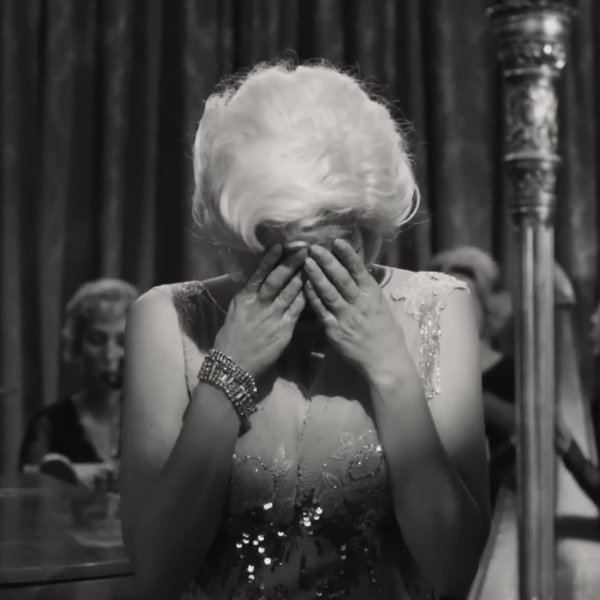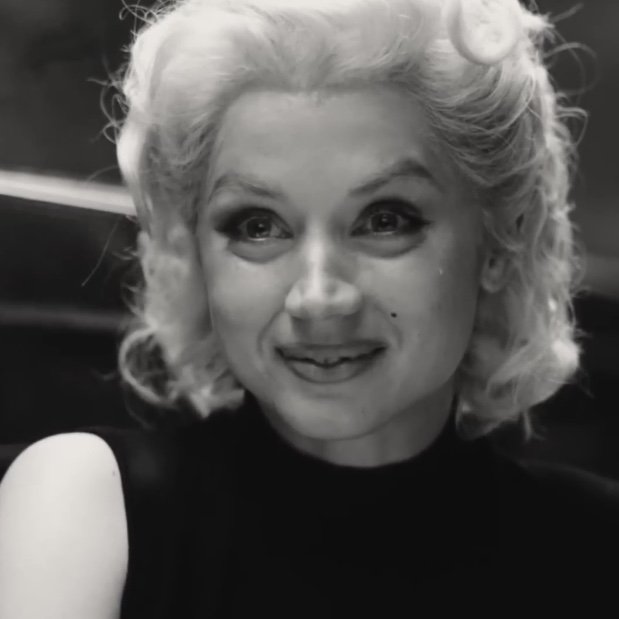Platinum Portrayal: Ana de Armas’ Golden Performance in Blonde
Disclaimer: Please note that this article about the film, Blonde, features content related to mental and emotional trauma, and other similar themes, that may be triggering for some. Reader discretion is advised.
While many reviews of Andrew Dominik’s Blonde, the 2022 film based on Joyce Carol Oates’ historical fiction novel of the same name, were rather scathing, it’s Ana de Armas’ portrayals of Norma Jeane Mortenson and Marilyn Monroe that serve as the main reason to muster up the courage to try and commit to watching the often disturbing and disjointed three-hour film.
Oddly enough, through no fault of her own, it’s de Armas’ performance that’s representative of how disjointed the film really is: simply put, she’s far better than the material that surrounds her. Here are at least five scenes from Blonde where de Armas goes from good to great, displaying a wholehearted commitment to portraying a fictional incarnation of a famous figure, as well as the daunting, almost insurmountable, challenge of playing the most famous female icon in Hollywood history.
5. Calling the Shots: After talking to her agent by phone about the glaring salary inequity between her and a much-higher-paid Jane Russell for 1953’s Gentlemen Prefer Blondes, Norma Jeane calmly questions: “And I’m playing the blonde, in Gentlemen Prefer Blondes? That’s an insult.” She remains polite, even announcing: “I’m gonna hang up now,” but a second later her agent calls her Marilyn, to which Norma Jeane angrily replies: “F*** Marilyn, she’s not here!” and slams down the receiver. de Armas gives Norma Jeane a look of stunned disbelief at what has transpired, but soon proudly smiles at her newfound confidence.
4. Pink Diamonds: de Armas is Monroe’s Lorelei Lee doppelgänger in Blonde’s recreation of the classic “Diamonds are a Girl’s Best Friend” musical number from Gentlemen Prefer Blondes. With only two days to learn the choreography, de Armas captured Monroe’s hand gestures, shoulder shrugs and slinky movements on the narrow staircase. de Armas did 21 takes, with Dominik using the 21st in the final film.
3. Audition Ambition: In the scene where a nervous Norma Jeane auditions for the role of Nell for 1952’s Don’t Bother to Knock, it’s her opportunity to show the (uninterested) male powers that be how connected she is to the character, to the material and to what it represents. Norma Jeane delivers a solid audition (complete with de Armas dropping a single tear down her left cheek), but still asks to do the reading again. de Armas conveys Norma Jeane’s longing for connection, to be heard, not just seen.
2. A Method to the Sadness: At an acting workshop, an in-depth, Method-style exercise eventually sends Norma Jeane down to the floor in hysterics. As a disheveled Norma Jeane tries to regain her composure, as if she’s been jolted awake from a nightmare, the teacher asks: “What were you thinking of?” To which she replies: “I wasn’t thinking.” She quickly tries to gather her thoughts: “Um, maybe… I was remembering?” This is one of de Armas’ strongest scenes, for its display of raw emotion offset soon thereafter by a subtle, shy smile and a loud sniffle during Norma Jeane’s responses, showing just how committed Norma Jeane was to exploring her acting craft, even after an intense reaction.
1. Mother and Child Reunion: Early in the film, a seven-year-old Norma Jeane is living in Los Angeles with her mentally and emotionally unstable mother, Gladys. After surviving in a volatile, violent environment, Norma Jeane is placed in an orphanage, while her mother is eventually institutionalized. One of de Armas’ most gut-wrenching scenes occurs when Norma Jeane sees her mother for the first time in well over 10 years. de Armas’ reaction is visceral, capturing the sadness of separation, followed by her scanning her mother’s face in confusion. Despite their deeply dysfunctional history, it’s simply a child wanting her mother.
In an interview with the SAG-AFTRA Foundation, de Armas’ theorized as to the nature of this complicated relationship: “She really wants to fix Mother. The absent father figure is a problem, but I feel like Mother is the real problem, and what she feels like she has to fix… She thought, if I can find my dad and he comes back, then my mom is gonna be okay, but because I can’t find him, if I’m very, very famous, he can find me. But really it was the mother, you can see that she is trying to fix that, to build that relationship, and it’s obviously… no reaction there, there’s nothing, there’s no feedback, they don’t recognize each other.”
Honorable Mentions: de Armas has other remarkable moments in the film. For instance: The recreation of “I Wanna Be Loved By You” from 1959’s Some Like It Hot. Norma Jeane is on set in Monroe mode, playfully and seductively lip-syncing to the track, but quickly de Armas’ face switches to reveal a devastatingly deflated Norma Jeane, who stops mid-scene, and puts her head in her hands, only to then erupt ferociously in anger over the alleged demeaning on-set gossip about her. In seconds, de Armas’ range runs the spectrum from physical embodiment to mentally distracted to emotionally enraged.
Also, Norma Jeane’s meeting with “The Playwright,” is a rare occasion that we see her calm and self-assured. She’s clearly smitten with the intellectual across the table, and she beams at the professional and personal possibilities. Their flirtatious exchange of the greeting, “Hey, you” is one of the film’s sweet, all-too-brief moments.
de Armas received several acting-award nominations in early 2023, including an Academy Award nomination for Best Performance by an Actress in a Leading Role. And while she didn’t win any golden statues, her performance is the gleam amid all the gloom.
Coppola Mechanism: Francis and Sofia’s Different Portrayals of Loneliness
In between The Godfather and The Godfather Part II, Francis Ford Coppola directed another classic: 1974’s The Conversation. Gene Hackman plays Harry Caul, a San Francisco surveillance expert who delves relentlessly into other people’s lives. Yet after one assignment, which has him initially (just) eavesdropping on a wealthy man’s wife and her male companion, he eventually finds himself trying to save what’s left of his own life. The viewer, funnily enough in an inherently voyeuristic role, sees that it’s not much of a life to begin with (barren loft void of color or personality; awkward attempts at human relations, specifically ones with women). Yet Harry seemingly resounds himself to reclusiveness, a sort of Catholic-induced self-punishment for the guilt that goes along with doing what he knows is wrong.
Coppola’s still-relevant script touches upon themes of technological obsession, voyeurism and paranoia, and its last scene is solemn and unsettling. Slow-jazz saxophone plays over the scene, a disturbingly serene choice to show someone peacefully succumbing to the (literal) mess one has made of his life. While Harry keeps human interaction and emotional involvement at a literal faraway distance, there’s a character in another Coppola creation who wants to intentionally connect with others, but first, with herself.
Partly based on Sofia Coppola’s time in Tokyo during her early twenties, 2003’s Lost in Translation is one of the best at capturing loneliness. The scene when Charlotte (Scarlett Johansson) calls a friend on the phone—a symbol of communication and connection—illustrates yet another way Charlotte feels dismissed and disconnected, not just a stranger in a new city, but worse, in her own life. As she sits alone in her hotel room, high atop and removed from the hustle and bustle of the city below, tearful gasps represent, in more ways than one, a longing to find home. The film’s soundtrack of dreamy, melancholic melodies and fuzzy feedback create a sense of… wander, and at times convey a hopeful reawakening for Charlotte, and actor in mid midlife crises, Bob (Bill Murray), both looking to feel refreshed after spending their lives in a (jet lag) haze.
Although both films are almost 30 years apart, Francis and Sofia show characters who are achingly lonely, yet the main difference is that one feels he deserves to be, the others are desperately trying not to be.
The Conversation: Paramount Pictures; Lost In Translation: Focus Features.










